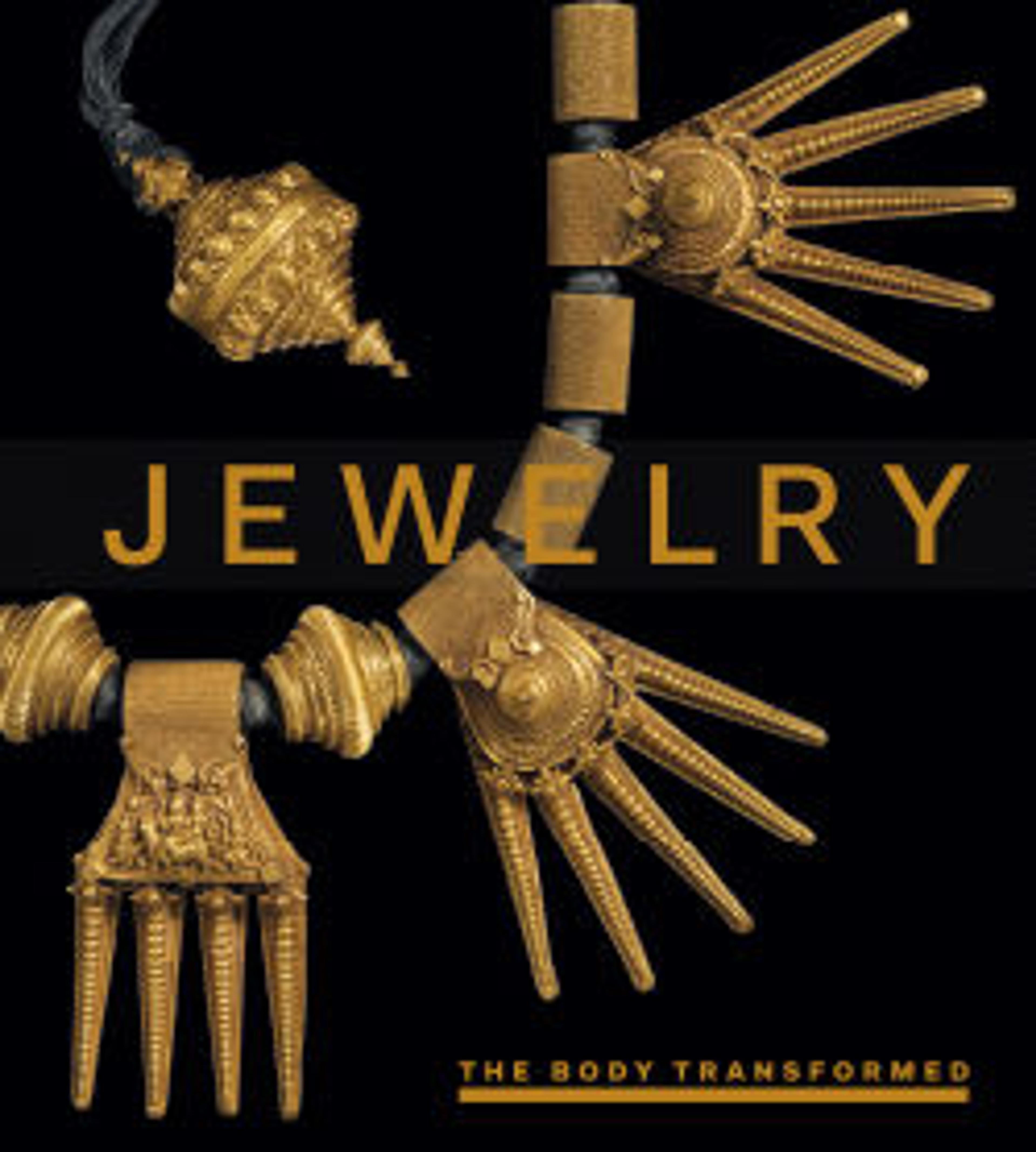Brooch
Austrian and German Jugendstil did not subscribe to the exaggerated attenuation and sinuously curvilinear organic forms of Art Nouveau, its Franco-Belgian counterpart. Although Jugendstil designs also frequently drew inspiration from nature, they were often stylized to the point of abstraction; Jugendstil decorative motifs frequently took on specific symbolic meanings. Hauser, an Austrian-born sculptor and goldsmith who moved from Vienna to Munich sometime around 1900, was an active participant in the movement.
Hauser's principal motif for this brooch is the night-blooming lotus, a member of the water-lily family, which for centuries has been a symbol of evolution and enlightenment. The stylized flowers, growing on delicately tapering wavy stems, seem to float upward, as if attracted to the soft glow of the large cabochon moonstone. The flecked lapis-blue enameled background suggests the liquid reflection of a starry nighttime sky. Thirteen pendant moonstones hang from gold chains like murky water drops. The semiprecious materials and symbolist imagery would have appealed to a progressive European clientele, much like the jewels designed by his French counterpart René Lalique.
Hauser's principal motif for this brooch is the night-blooming lotus, a member of the water-lily family, which for centuries has been a symbol of evolution and enlightenment. The stylized flowers, growing on delicately tapering wavy stems, seem to float upward, as if attracted to the soft glow of the large cabochon moonstone. The flecked lapis-blue enameled background suggests the liquid reflection of a starry nighttime sky. Thirteen pendant moonstones hang from gold chains like murky water drops. The semiprecious materials and symbolist imagery would have appealed to a progressive European clientele, much like the jewels designed by his French counterpart René Lalique.
Artwork Details
- Title: Brooch
- Designer: Ferdinand Hauser (Austrian, 1864–1919)
- Date: ca. 1912–13
- Medium: Gold, enamel, moonstones
- Dimensions: 2 3/4 × 1 11/16 × 9/16 in., 0.1 lb. (7 × 4.3 × 1.5 cm, 27.216g)
- Classification: Jewelry
- Credit Line: Purchase, Dorothy Merksamer Bequest, in honor of Cynthia Hazen Polsky, 1998
- Object Number: 1998.356
- Curatorial Department: Modern and Contemporary Art
More Artwork
Research Resources
The Met provides unparalleled resources for research and welcomes an international community of students and scholars. The Met's Open Access API is where creators and researchers can connect to the The Met collection. Open Access data and public domain images are available for unrestricted commercial and noncommercial use without permission or fee.
To request images under copyright and other restrictions, please use this Image Request form.
Feedback
We continue to research and examine historical and cultural context for objects in The Met collection. If you have comments or questions about this object record, please contact us using the form below. The Museum looks forward to receiving your comments.
